MACRO OCTOBER IN MARLERA - Episode Nine - SUNDAY THE 15TH
Yes, as you probably guessed already, the 15th of October was yet another surprisingly warm October day so I spent a couple of hours in Marlere, busy searching for insects, spiders, and other macro details for this series.
For those who haven't seen any of the previous episodes, Marlera is a coastal area situated a couple of kilometers from the village of Liznjan and about five or six kilometers from where I live.
This is the Carpocoris purpureipennis, a bug from the Pentatomidae family. The insect was resting on the faded flower of the Dittrichia viscosa plant when the photograph was taken.
Some of the flowers on the lower part of that same plant were still in good shape.
Here you can see a much smaller bug that was feeding on one of those still functional flowers.
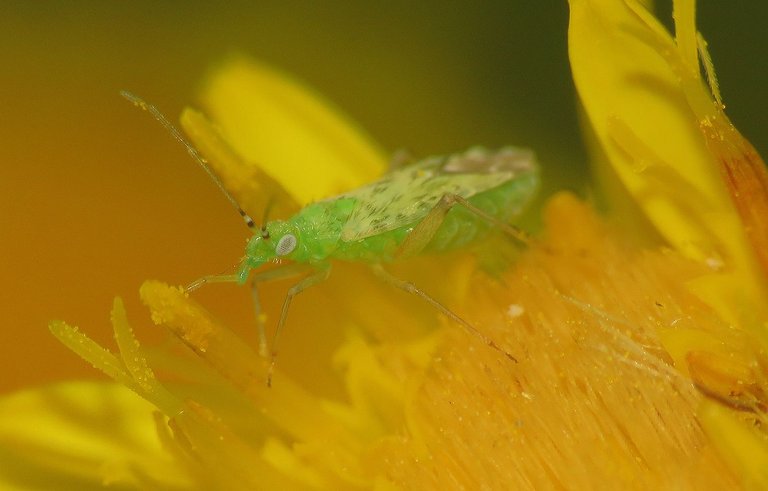
The name of the species is Macrotylus paykulli, and it belongs to the Miridae family.
It seems that the tiny bug was piercing the minuscule pollen grains with its proboscis.
On the ground, less than a meter from Dittrichia viscosa ...
... I found a well-camouflaged spider. Hogna radiata is a big, robust spider from the Lycosidae family, one of the biggest if not the biggest in this area. Hogna radiata shown in this, the previous, and the next few photographs is a female.
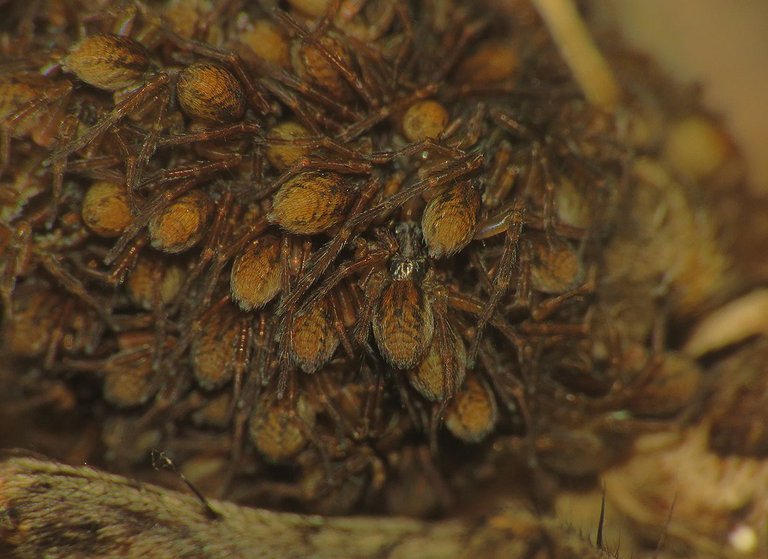
A female with a big cluster of spiderlings on its back.
The tiny juvenile spiders form a compact ball that looks like some kind of brown strawberry from a distance.
This is nothing new for me, I come across this type of scene at least once or twice a year, in late summer or early autumn, but a big Hogna radiata female transporting its offspring around is always a memorable encounter and a joy to photograph.
Five or then minutes later, always of the same Dittrichia viscosa plant ...
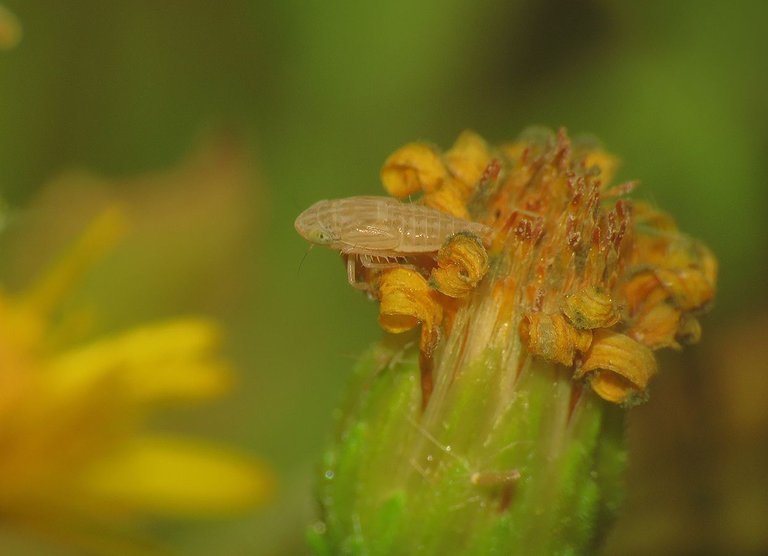
... I photographed this leafhopper nymph.
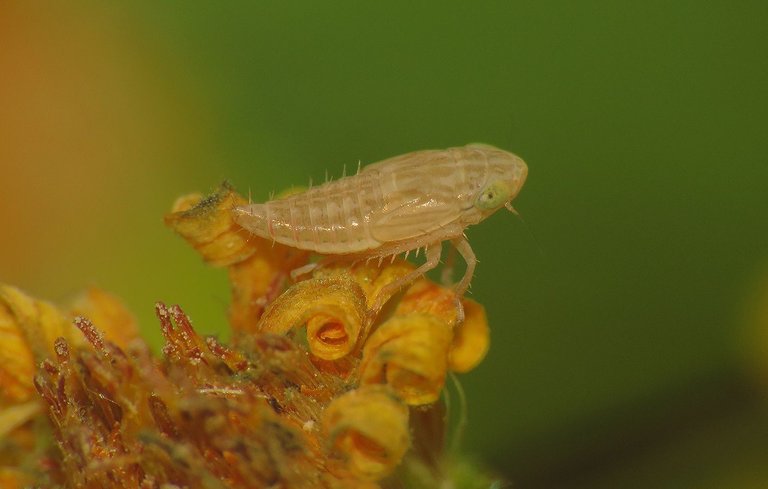
In this case, I can't tell you the name of the species. The family is Cicadellidae, of course.
This is the Colias croceus, a butterfly from the Pieridae family.
The butterfly was found and photographed on one of the young Dittrichia viscosa plants that still haven't produced tall stems with many flowers.
I photographed the same butterfly in two different ways. Once with the flash of my camera on, and then, using a longer exposure, in the subdued ambient light at the end of that warm October day.
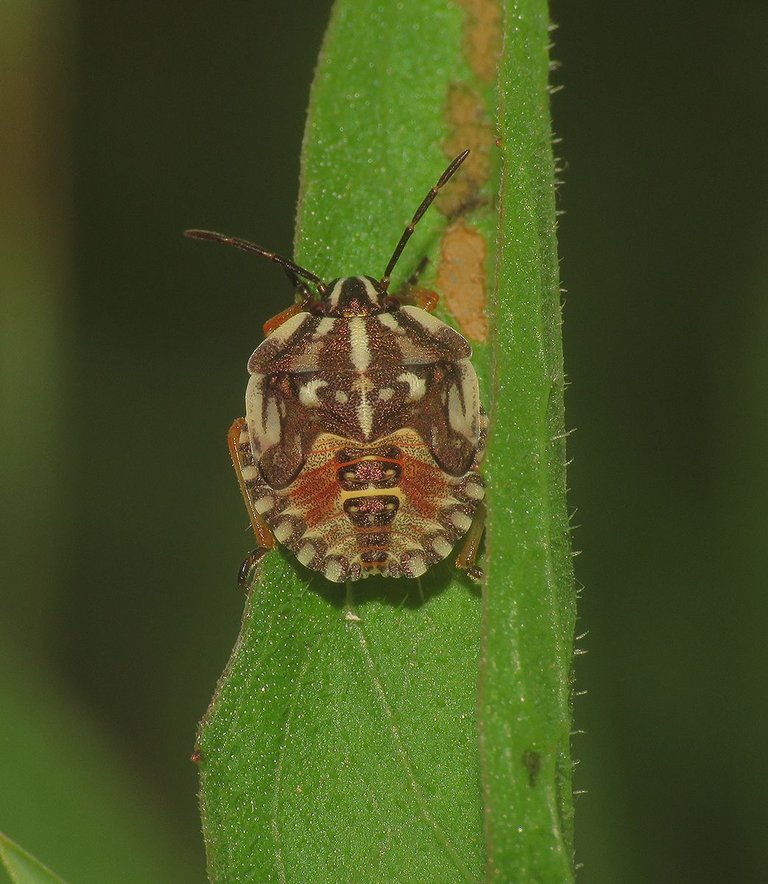
On the leaves of another herbaceous plant a couple of meters further ...
... I found a small group of Carpocoris purpureipennis nymphs.
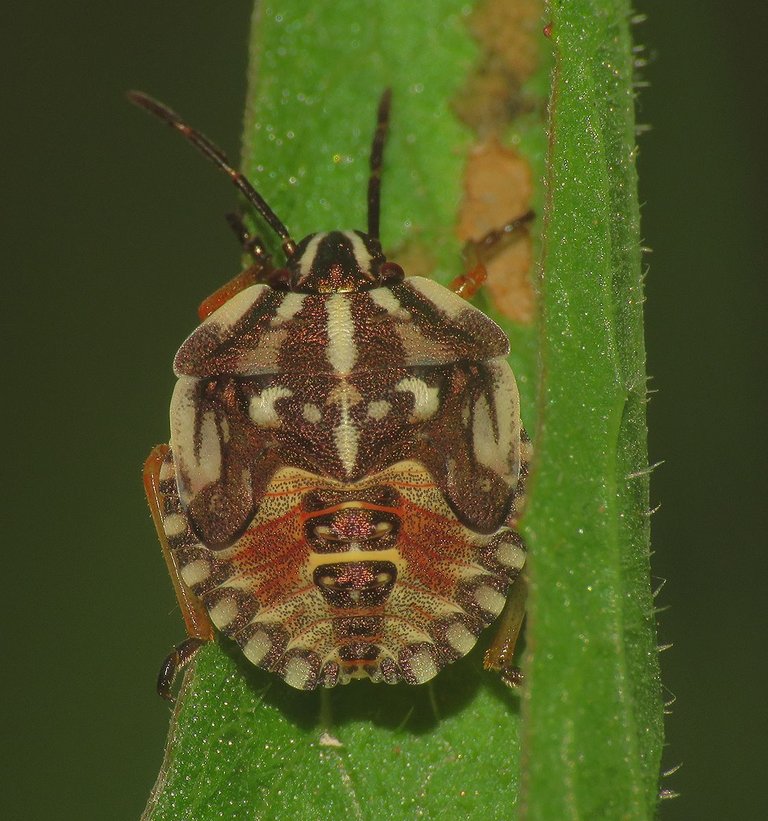
The Carpocoris purpureipennis shown in this and the previous two photographs are the 5th instar nymphs ready to become adults soon.
This one is a bit younger - a 4th instar nymph. Not far from these nymphs, less than a meter, I think ...
... I photographed this Emmelina monodactyla, a moth from the Pterophoridae family.
Here you can take another quick break from the macro view. The photograph shows the vegetation by the side of one of the narrow unpaved roads that lead through Marlera. You can see ferns, flowers, blackberry shrubs, and more.
On the Foeniculum vulgare plant, I photographed a Papilio machaon caterpillar.
Judging by its pose and overall look, this caterpillar is dead.
In this set of four wide shots, you can see the tall dry grass that resembles a series of abstract, accidental scribbles. On one of these dry stems, a few minutes after the sunset ...
... I photographed this wasp that was getting ready to overnight on the top of the grass.
Can't tell you the name of the species, but I'm sure that it's a potter wasp from the subfamily Eumeninae in the large and varied Vespidae family.
This moth was found and photographed on the short green grass close to the ground. Nomophila noctuella is the name of this species from the Crambidae family.
In the same area covered with tall dry grass and green grass mixed with various herbaceous plants underneath it, I also found one bushcricket and one grasshopper. I'll show you the bushcricket first.
In this, the previous, and the following shot ...
... you can see the Rhacocleis germanica bushcricket.
This is the grasshopper.
A well-camouflaged Chorthippus brunneus grasshopper.
The small red detail on the grasshopper's abdomen is the only part of its body that sticks out from the rest.
I photographed one more scene on the large Dittrichia viscosa plant covered with many flowers in various stages of development.

Here you can see the Helicoverpa armigera caterpillar that was feeding on one of the still fresh flowers with plenty of pollen and nectar. Helicoverpa armigera is a moth from the Noctuidae family.
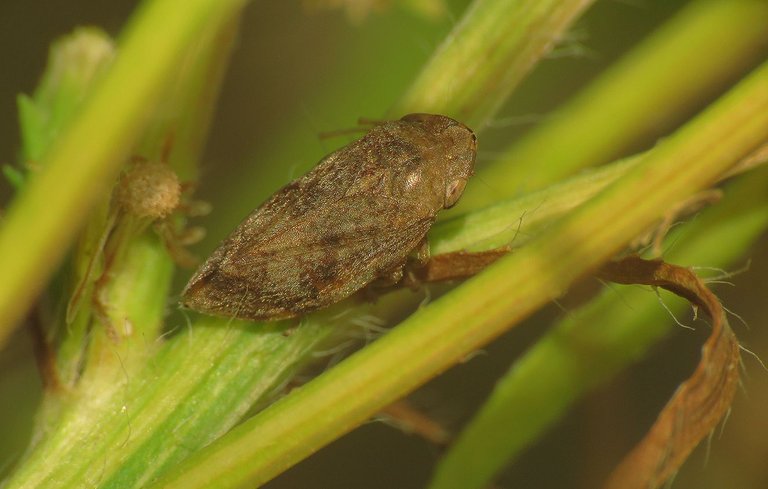
This froghopper from the Aphrophoridae family was resting on the Erigeron bonariensis plant. The name of the species is Aphrophora alni.
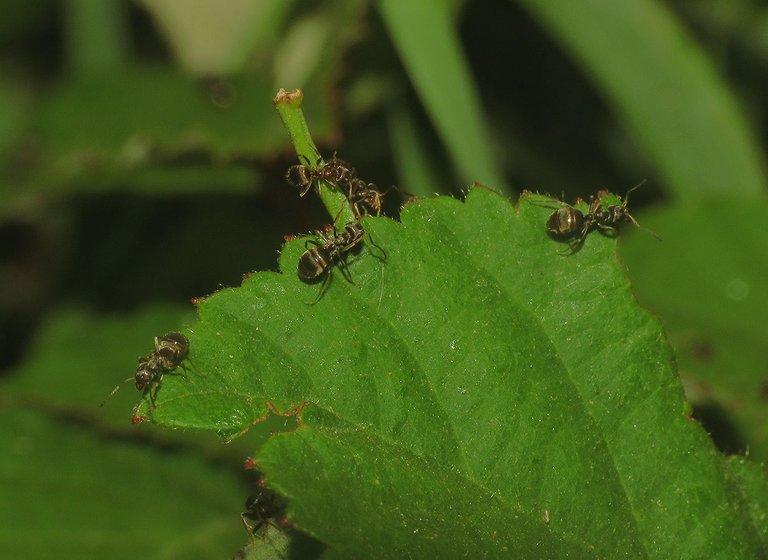
Here you can see a small group of Lasius niger ants running across the leaf of the blackberry shrub. In the following photograph ...
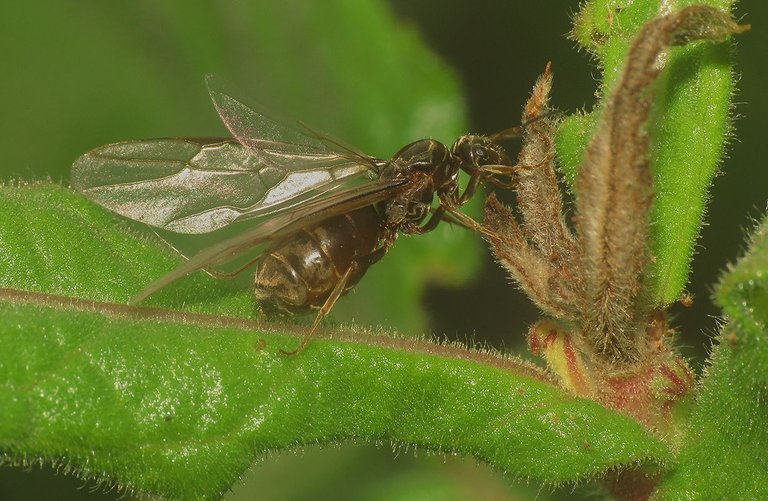
... you can see the much bigger winged queen of the same species climbing the nearby Dittrichia viscosa.
Here you can see the same queen on one of the leaves on the top of the plant.
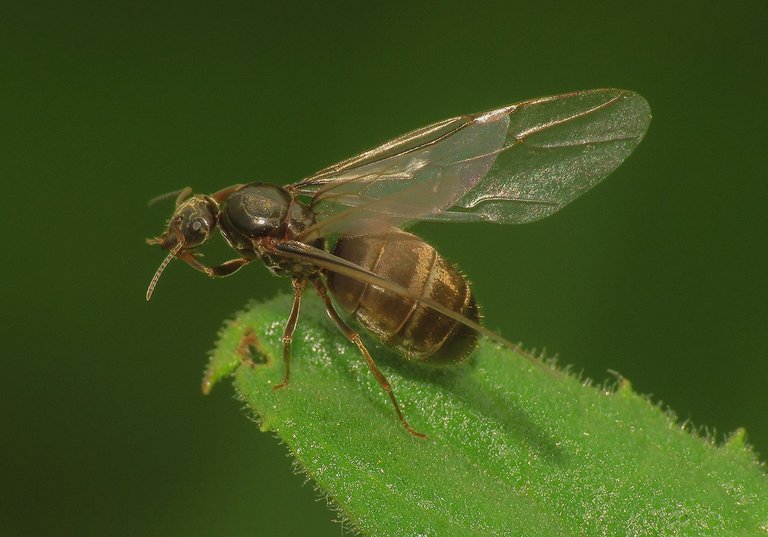
The night was very near. The light was pretty low. So at first, I photographed the ant with the flash of my camera on ...
... but the scene looked much better in the subdued ambient light. It took me some time and a lot of patience to get these shots that show the queen's wings in all their elegant beauty. The wings are there only to take the reproductive ant further from the colony in which was originated. That further could be ten or twenty meters, but it could also be fifty meters or more, hundreds of meters sometimes.
After the mating the males die and females shed their beautiful wings.
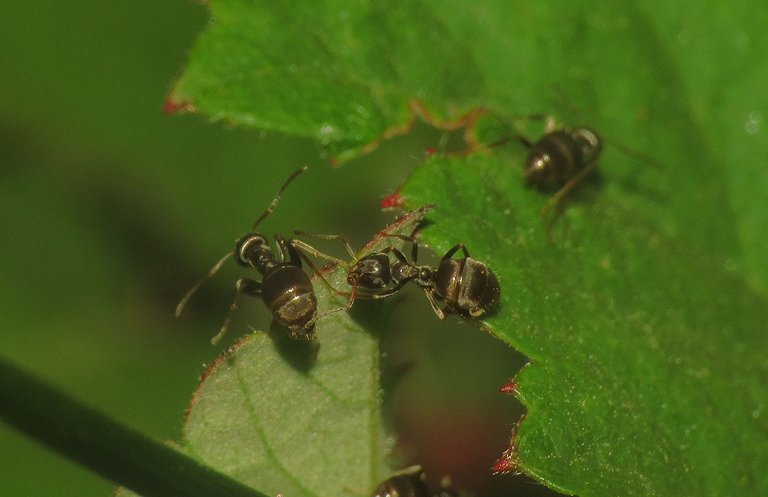
The workers are very busy and frenetic when the winged kings and queens get released to spread like seeds that will establish new colonies.
AND THAT'S IT. AS ALWAYS HERE ON HIVE, THE PHOTOGRAPHS ARE MY WORK - THE END.
The following links will take you to the sites with more information about some of the protagonists of this post. I found some stuff about them there.
https://en.wikipedia.org/wiki/Carpocoris_purpureipennis
https://en.wikipedia.org/wiki/Dittrichia_viscosa
https://www.britishbugs.org.uk/heteroptera/Miridae/Macrotylus_paykulli.html
https://en.wikipedia.org/wiki/Hogna_radiata
https://en.wikipedia.org/wiki/Colias_croceus
https://en.wikipedia.org/wiki/Emmelina_monodactyla
https://en.wikipedia.org/wiki/Potter_wasp
https://en.wikipedia.org/wiki/Nomophila_noctuella
https://uk.inaturalist.org/taxa/503132-Rhacocleis-germanica
https://en.wikipedia.org/wiki/Chorthippus_brunneus
https://en.wikipedia.org/wiki/Aphrophora_alni
https://www.antwiki.org/wiki/Lasius_niger

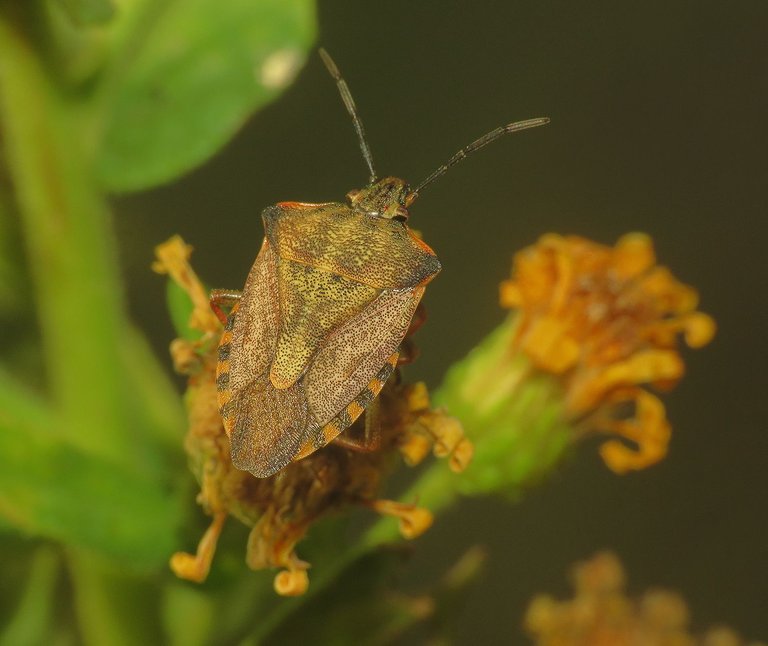

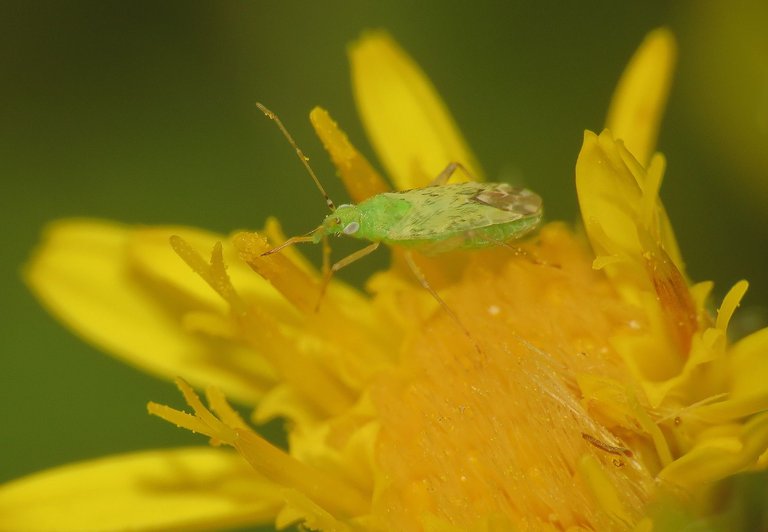
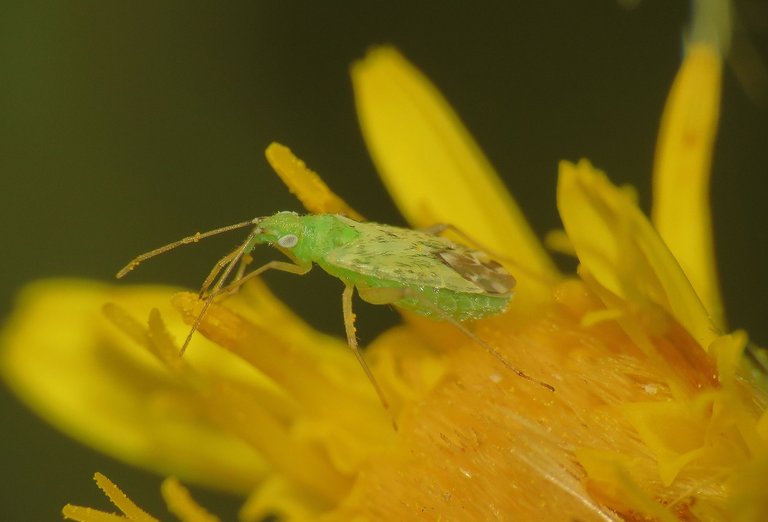


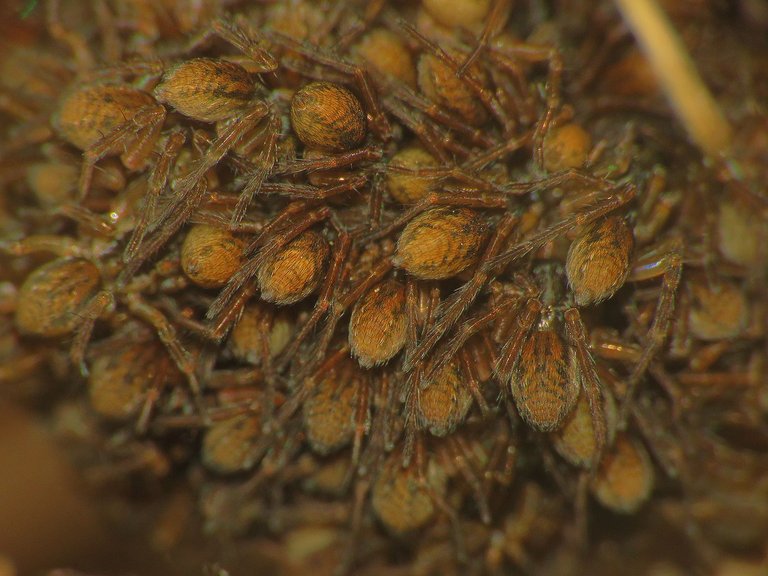


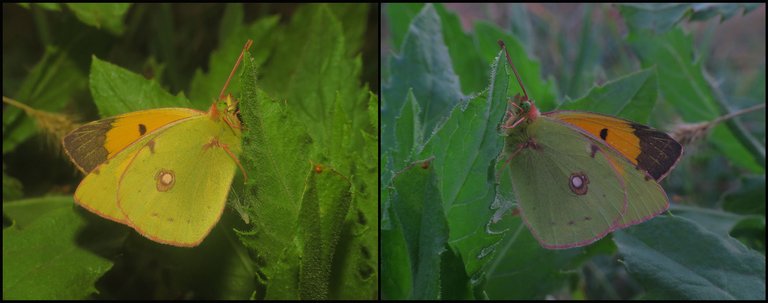
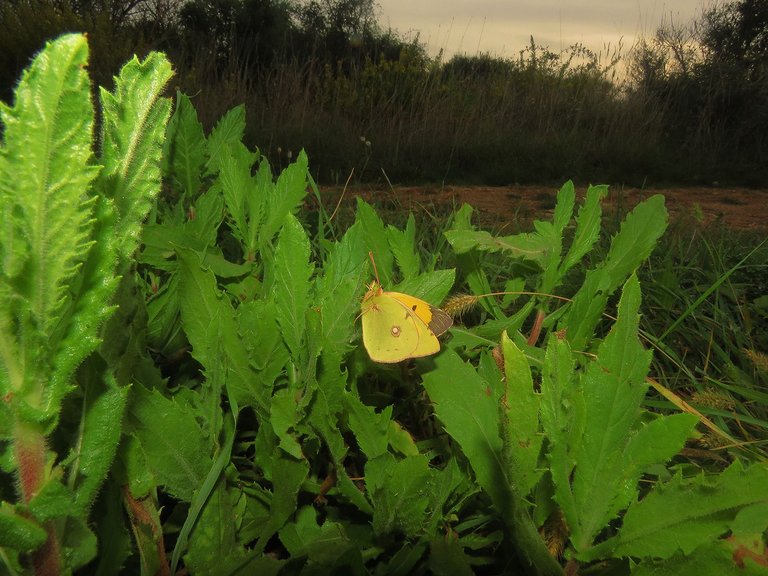
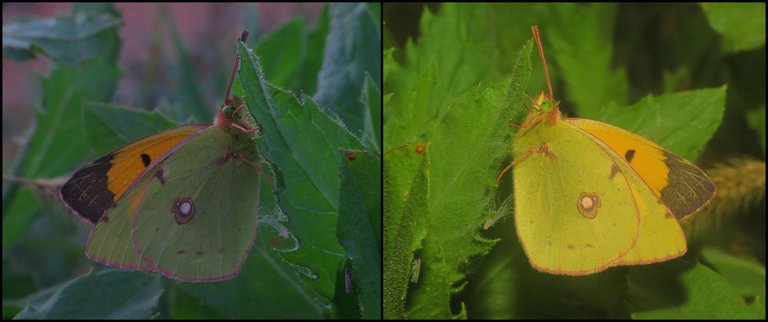
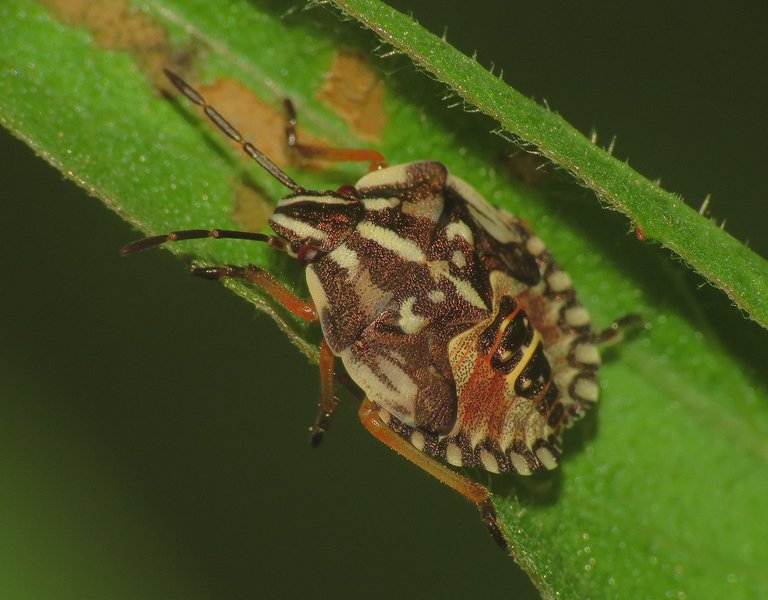
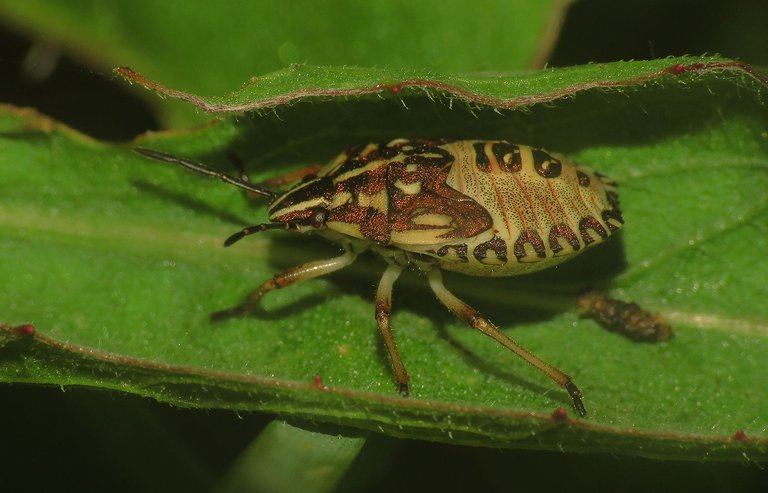

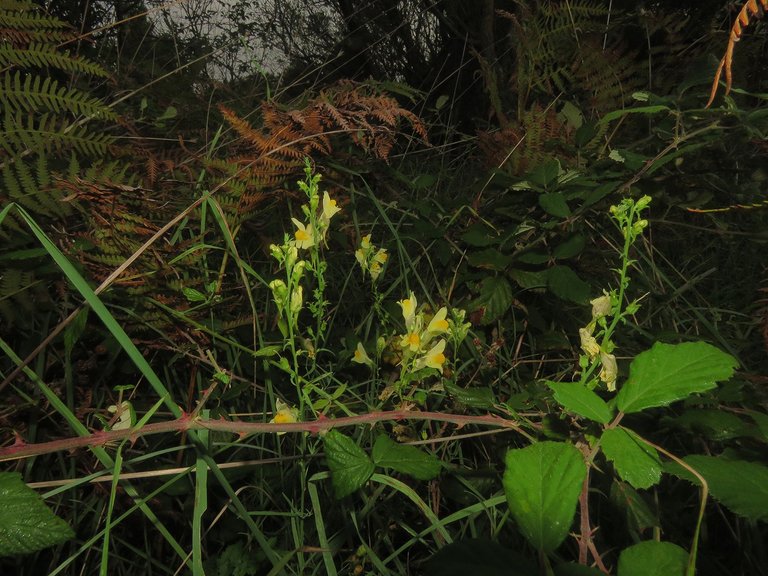
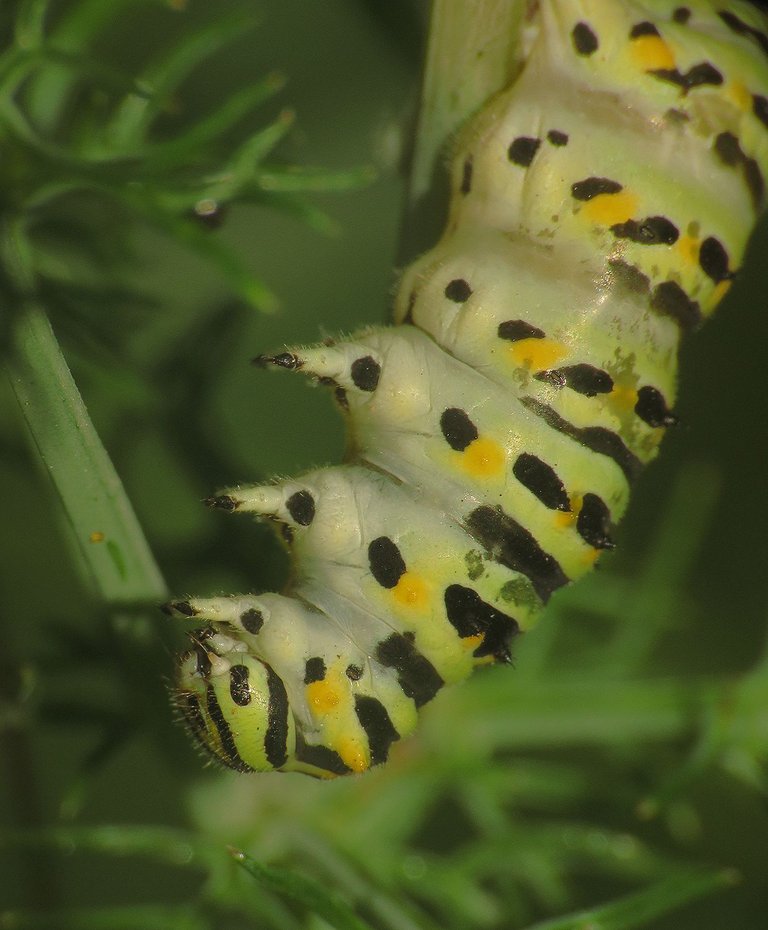
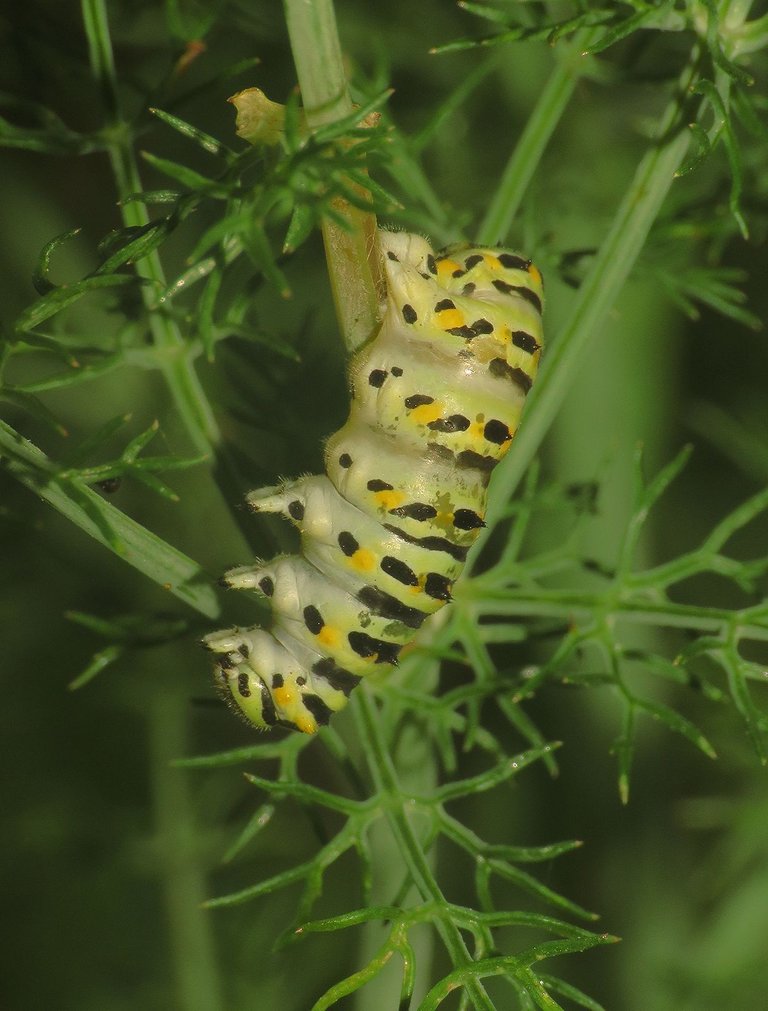
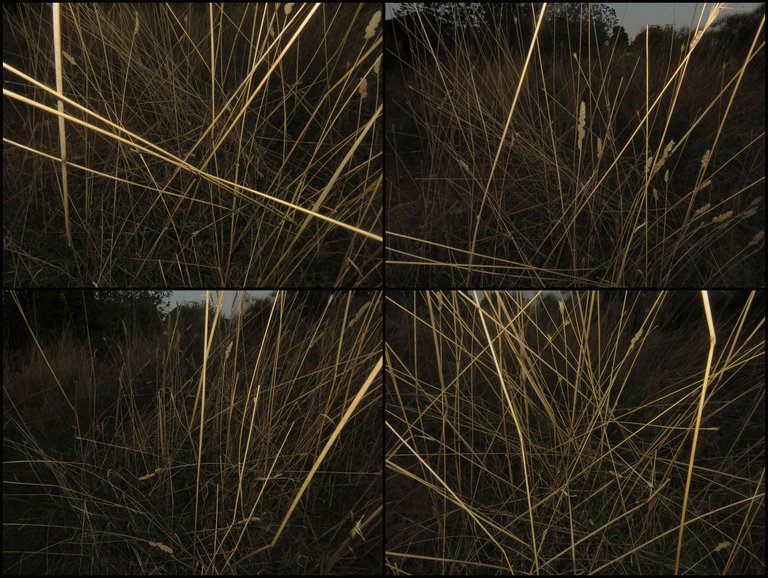
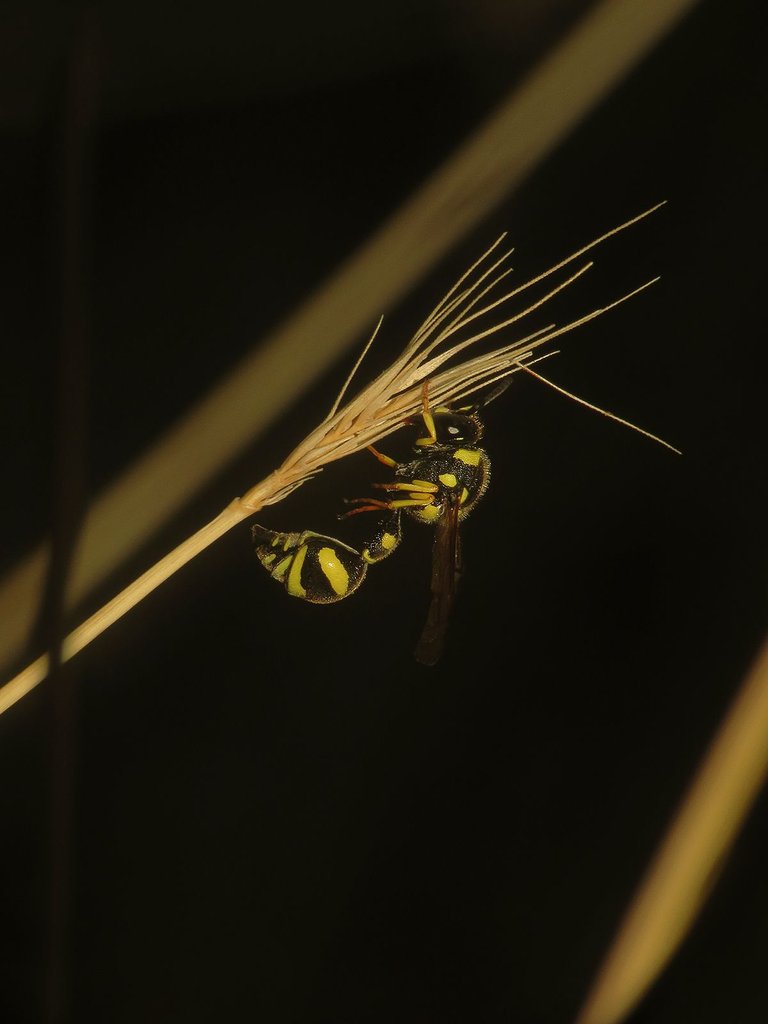
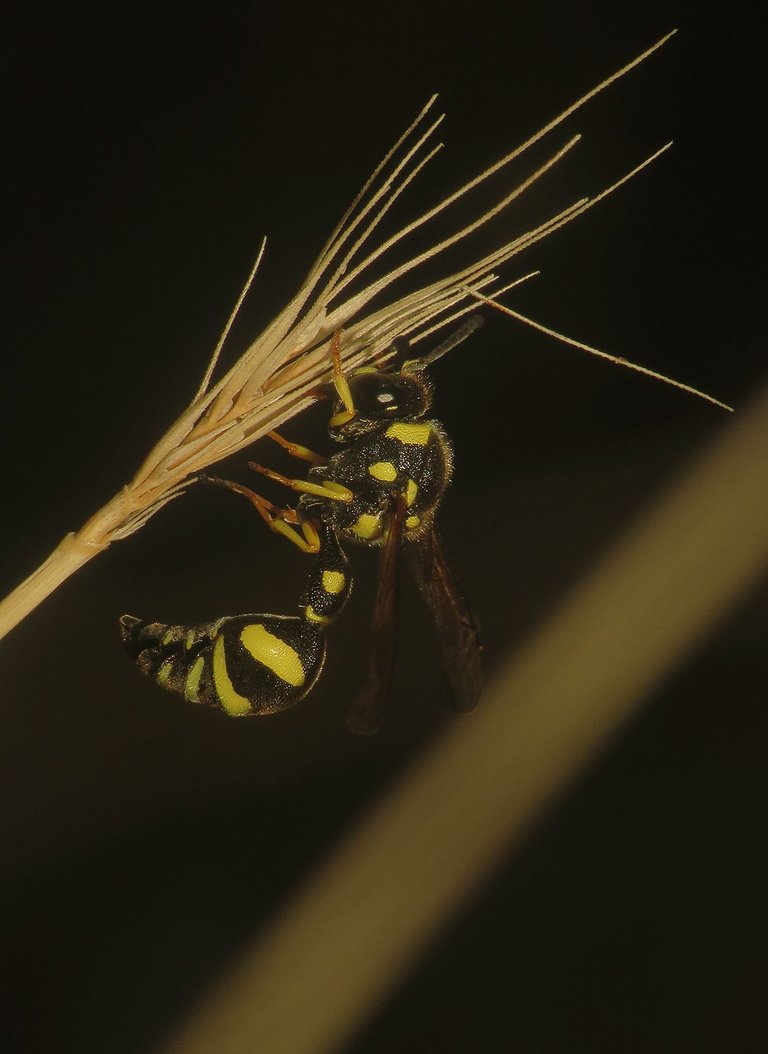

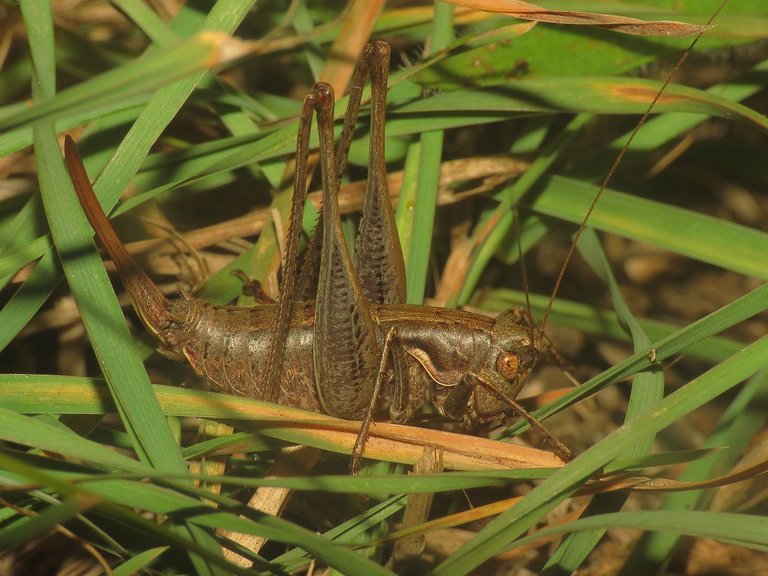
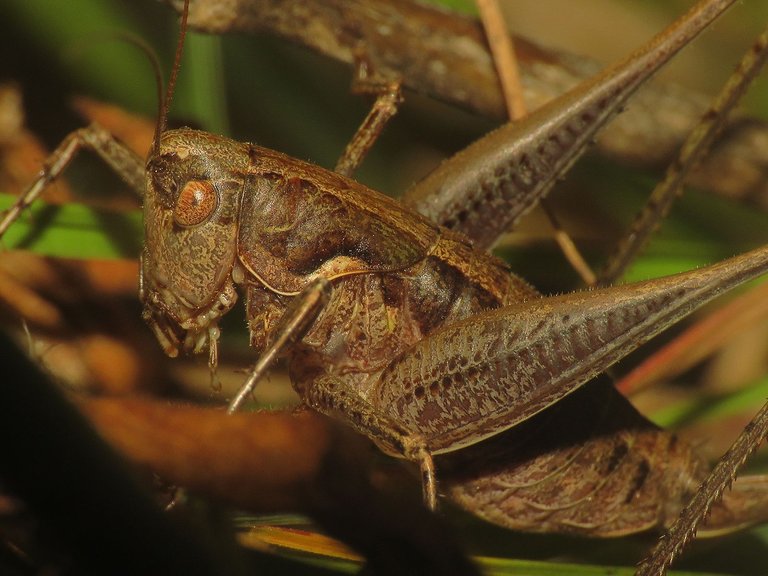

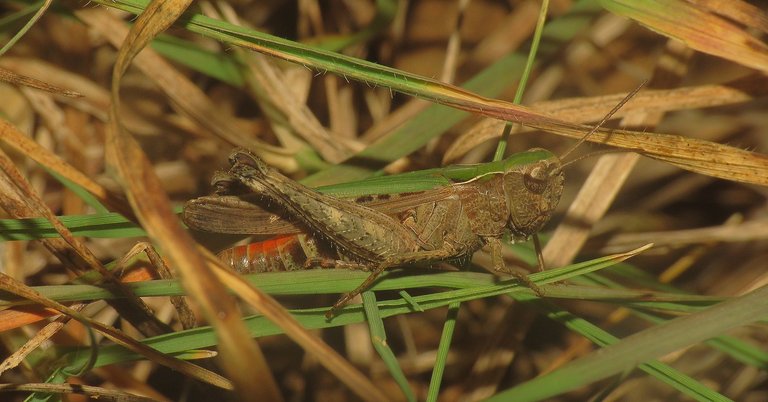
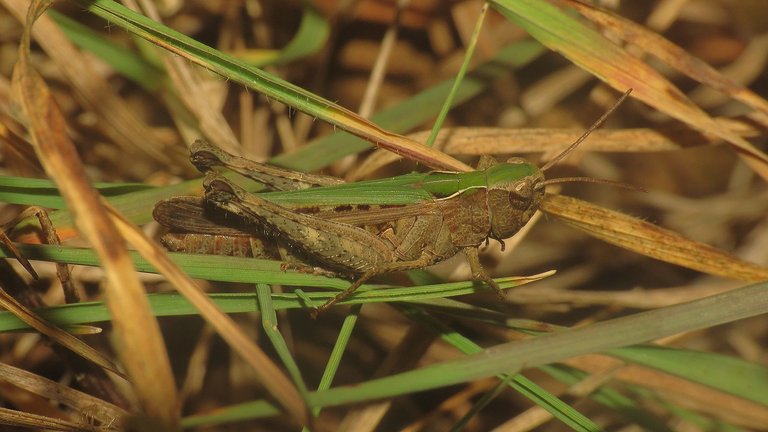
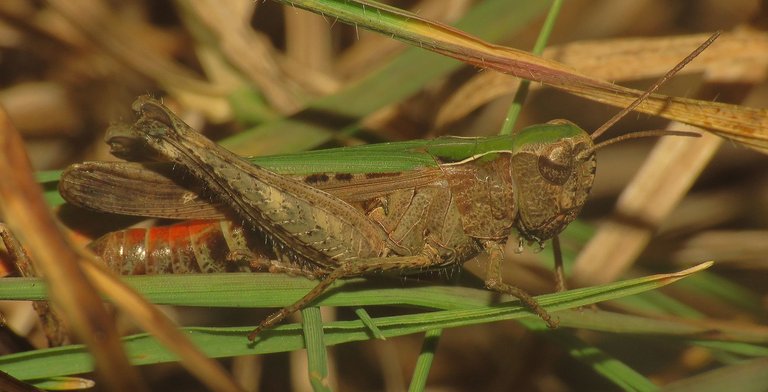
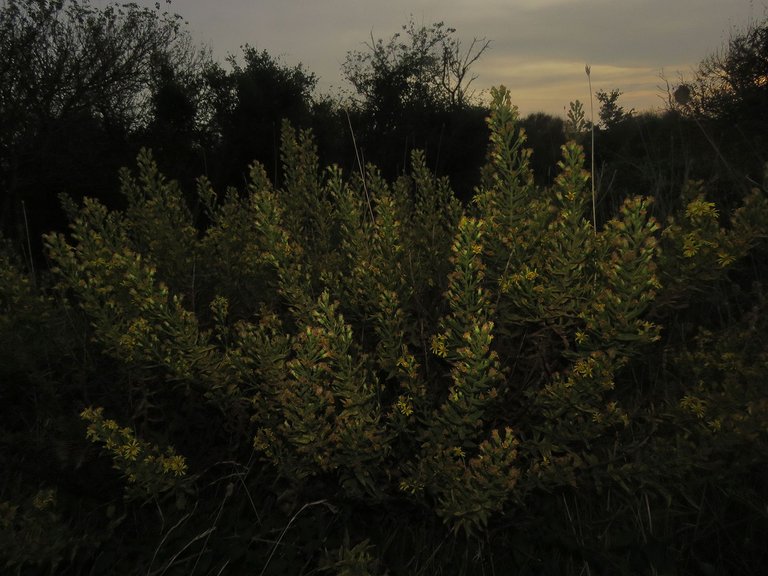
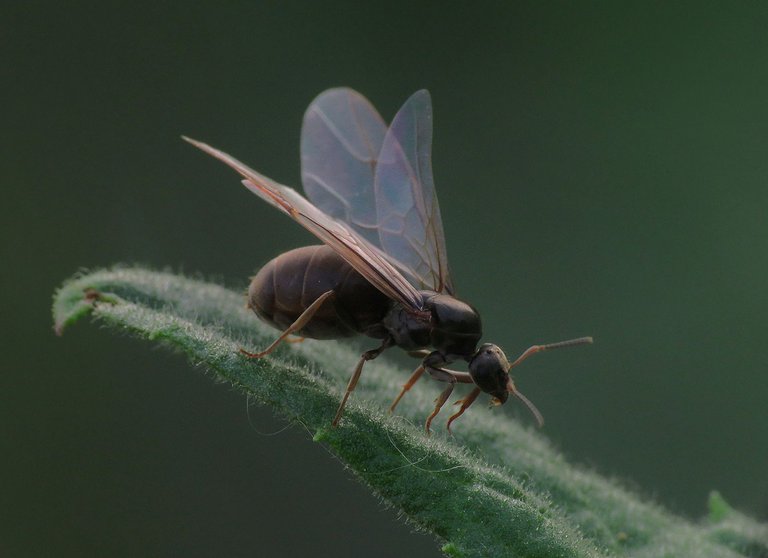
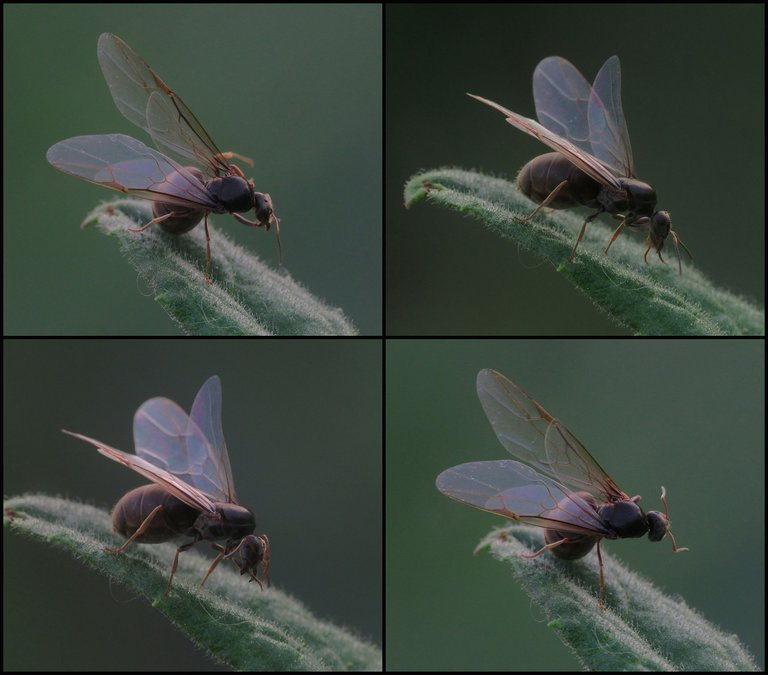
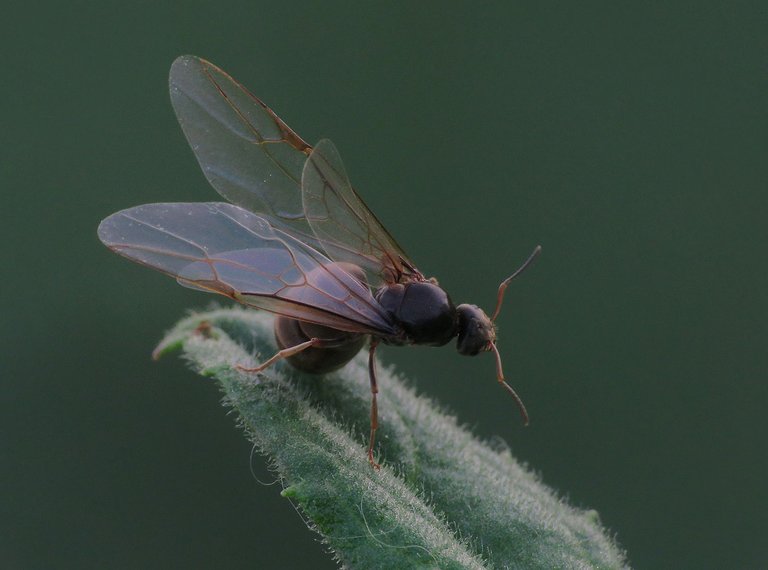
A publication like for an entomology magazine! ...What photos friend, what photos!
!discovery shots
!VSC
!PIZZA
!BBH
@jlinaresp has sent VSC to @borjan
This post was rewarded with 0.1 VSC to support your work.
Join our photography communityVisual Shots
Check here to view or trade VSC Tokens
Be part of our Curation Trail
@jlinaresp ha enviado VSC a @borjan
Éste post fue recompensado con 0.1 VSC para apoyar tu trabajo.
Únete a nuestra comunidad de fotografía Visual Shots
Consulte aquí para ver o intercambiar VSC Tokens
Se parte de nuestro Trail de Curación
@borjan! Your Content Is Awesome so I just sent 1 $BBH (Bitcoin Backed Hive) to your account on behalf of @jlinaresp. (5/5)
Thank you. 😃 Glad you like these macro reports from the meadows ... or, said in a more colorful way ...

This post was shared and voted inside the discord by the curators team of Discovery-it in collaboration with Visual Shots community.
Discovery-it is also a Witness, vote for us here
Delegate to us for passive income. Check our 80% fee-back Program
$PIZZA slices delivered:
@ekavieka(1/5) tipped @borjan
jlinaresp tipped borjan
The photos are so beautiful and colourful where it looks so attractive to look again.
Amazing shots!
For me as ant fan so beautiful, this Lasius niger queen!
Yes 🙂 winged ants can look showy with those elegant wings.
always an awesome post with lots of macro photos.
the spiderling on Hogna radiate body looks a little bit creepy though. !LOLZ
!PIZZA !LUV
lolztoken.com
A lite house.
Credit: reddit
@borjan, I sent you an $LOLZ on behalf of ekavieka
(1/6)
Farm LOLZ tokens when you Delegate Hive or Hive Tokens.
Click to delegate: 10 - 20 - 50 - 100 HP
What lovely insects, photographs where they are seen in their most beautiful form.
🙂
Congratulations @borjan! You have completed the following achievement on the Hive blockchain And have been rewarded with New badge(s)
You can view your badges on your board and compare yourself to others in the Ranking
If you no longer want to receive notifications, reply to this comment with the word
STOPCheck out our last posts:
🐝🐝😃🐝🐝
That's the spirit, @borjan! Keep up the good work. We're looking forward to seeing more of your daily posts. 🎉👏
Great shot as always.
It's a pleasure.
You surely an eagle eye at spotting good subjects for photography.
The macro image captures of the small animals that my friends show are quite interesting.
https://twitter.com/JunaidFazal1111/status/1718902789735067787
Mention not. I'll love to share your post it's really awesome
Esta Araña de Venezuela saluda a @borjan.
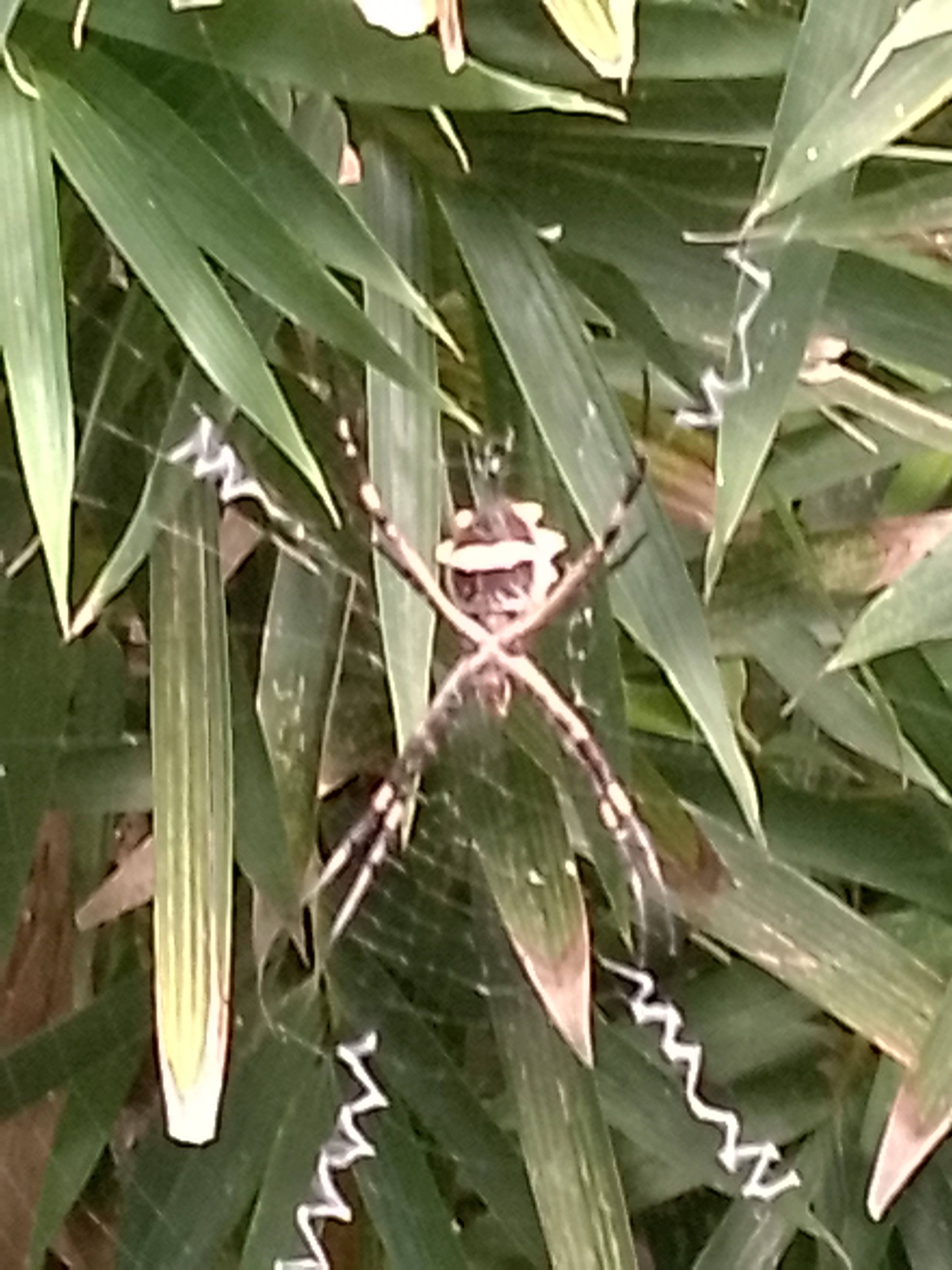
🙂
You gave us some awesome shots
They are so beautiful
I guess you have so much interests in insects
https://twitter.com/lee19389/status/1718950337279574165
#hive #posh
Absolutely the "Marlera coastal area" seems to be a great place to explore insects and plants for sure. One of these insects looks like a "human face" (with nose, eyes and floppy ears) !LOL Do you see that ? 🤣
Stay !ALIVE and enjoy your "bug hunting" Day Borjan !VSC 👌
@fun.farms has sent VSC to @borjan
This post was rewarded with 0.1 VSC to support your work.
Join our photography communityVisual Shots
Check here to view or trade VSC Tokens
Be part of our Curation Trail
@fun.farms ha enviado VSC a @borjan
Éste post fue recompensado con 0.1 VSC para apoyar tu trabajo.
Únete a nuestra comunidad de fotografía Visual Shots
Consulte aquí para ver o intercambiar VSC Tokens
Se parte de nuestro Trail de Curación
@borjan! You Are Alive so I just staked 0.1 $ALIVE to your account on behalf of @ fun.farms. (1/10)
The tip has been paid for by the We Are Alive Tribe through the earnings on @alive.chat, feel free to swing by our daily chat any time you want, plus you can win Hive Power (2x 50 HP) and Alive Power (2x 500 AP) delegations (4 weeks), and Ecency Points (4x 50 EP), in our chat every day.

Yes, you definitively found an interesting face there. 😃 It looks a bit like an owl's face too.
Yes it does resemble an Owl. I agree !LOL 🦉
lolztoken.com
No, but April may.
Credit: bitpizza
@borjan, I sent you an $LOLZ on behalf of fun.farms
(6/10)
Farm LOLZ tokens when you Delegate Hive or Hive Tokens.
Click to delegate: 10 - 20 - 50 - 100 HP
lolztoken.com
It is slowly coming back to me.
Credit: reddit
@borjan, I sent you an $LOLZ on behalf of fun.farms
(1/10)
Congratulations, your post has been upvoted by @dsc-r2cornell, which is the curating account for @R2cornell's Discord Community.
The species of this animals actually looks so rare though right?
Well, they are common here where I live, but probably are rare somewhere else.
https://twitter.com/LovingGirlHive/status/1719033337006985488
Beautiful shots. I haven't seen that camouflaged spider else where until now and I never knew spider carries their young ones at the back. You know so much about insects and I am learning from you everyday.
Thank you. 🙂 Glad you like this macro stuff. I'm also learning from the Internet while preparing the posts.
https://twitter.com/jewellery_all/status/1719109977237831761
🙂🙂😊
Loved the spider with the babies aboard. We call the flowers in the photo before the dead caterpillar “Butter and eggs”.
That's a cool name. 🙂
I went to the same place last Sunday and saw many such beautiful insects but could not photograph them, some ran away and some were not visible at all. If pictures are made, this work is not easy at all, it takes a lot of effort.
Thanks for your contribution to the STEMsocial community. Feel free to join us on discord to get to know the rest of us!
Please consider delegating to the @stemsocial account (85% of the curation rewards are returned).
You may also include @stemsocial as a beneficiary of the rewards of this post to get a stronger support.
Omg! That caterpillar picture is wow 😀
Thanks for sharing these beautiful photographs 🙏